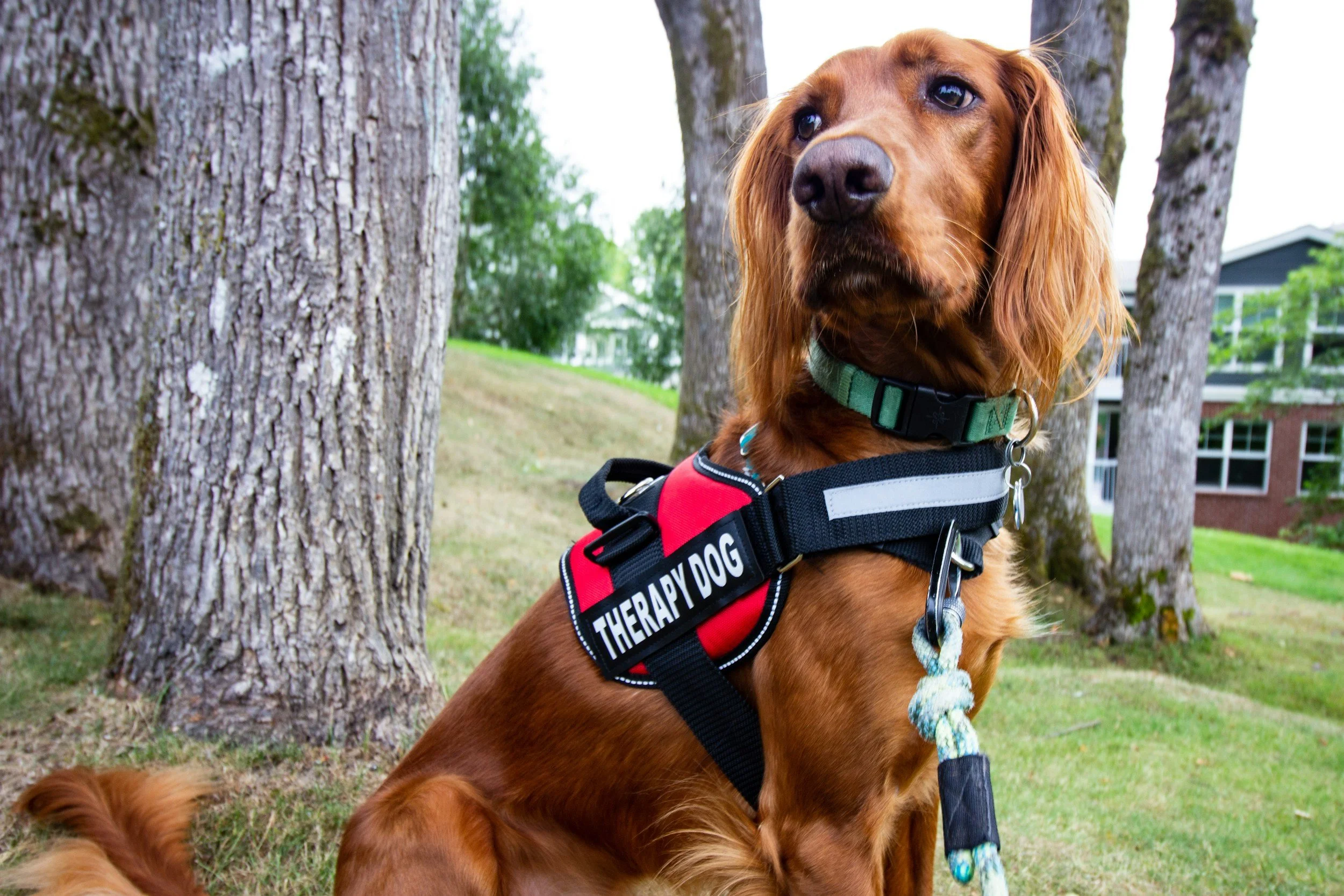From Shelter to Service: How Rescue Dogs Become Therapy Heroes
From Shelter to Service: How Rescue Dogs Become Therapy Heroes
Every day, rescue dogs are proving that second chances can lead to extraordinary purpose. With the right temperament and training, dogs once discarded or overlooked are becoming certified therapy animals — offering healing, comfort, and companionship to those who need it most. From hospital rooms and classrooms to disaster zones and memory care units, therapy dogs are changing lives — and many begin their journeys in shelters.
At All Paws on Deck, we believe that love, purpose, and connection go paw in paw. This is how rescue dogs are trained to become therapy heroes — and how you can be part of their remarkable journey.
What Is a Therapy Dog?
A therapy dog is a trained companion that provides emotional comfort in institutional or public settings such as:
Hospitals
Nursing homes
Schools
Libraries
Airports
Disaster response zones
Therapy dogs are different from service animals and emotional support animals. Service dogs are trained for specific tasks related to a disability, while emotional support animals don’t require any formal training. Therapy dogs, on the other hand, go through obedience training and temperament evaluation to ensure they are calm, safe, and comforting around all types of people — including children, elderly patients, and individuals with special needs.
Why Rescue Dogs Make Incredible Therapy Dogs
Many rescue dogs have faced uncertainty, trauma, or abandonment. That history, while heartbreaking, often makes them deeply attuned to human emotions. Trainers and handlers frequently describe rescue therapy dogs as having an “empathic instinct” — a quiet ability to sense sadness, anxiety, or fear, and respond with calm presence and affection.
With the right support, these dogs don’t just survive. They thrive — and bring joy to countless others in the process.
Step-by-Step: How a Rescue Dog Becomes a Therapy Dog
Training a rescue dog for therapy work takes time, patience, and structure. Here’s what the process typically looks like:
1. Adoption and Temperament Screening
The journey starts with finding the right dog. Ideal candidates are:
Friendly but not overly excitable
Confident but not dominant
Naturally calm in new situations
Comfortable with touch, sounds, and other dogs
Some shelters even flag dogs with therapy potential, especially those who are older, mellow, or people-oriented.
2. Obedience and Socialization Training
Before any therapy-specific training begins, basic obedience is essential. Most programs require therapy dogs to pass the Canine Good Citizen (CGC) test, which evaluates skills such as:
Sit, stay, come, and leave it
Walking calmly on a leash
Behaving politely around strangers
Ignoring distractions
Reacting appropriately to loud noises or unusual settings
Socialization is also critical — therapy dogs must be confident in unfamiliar environments, including places with crowds, medical equipment, or children.
3. Therapy-Specific Preparation
Once a dog has mastered obedience and socialization, therapy-specific training begins. This includes:
Visiting public spaces such as schools or hospitals
Learning to calmly accept petting from strangers
Remaining steady around walkers, wheelchairs, and hospital noises
Ignoring dropped food or medications
Lying quietly at someone’s feet or resting their head in a lap
Handlers are also trained to read the dog’s body language and manage stress during visits.
4. Evaluation and Certification
Once ready, dog-handler teams complete an evaluation with a certifying organization. These tests simulate real therapy visits and assess behavior, obedience, and temperament.
Rescue therapy dog teams may choose to certify with:
After passing, therapy dog teams are registered and insured to begin visits in approved facilities.
Where Therapy Dogs Work
Certified therapy dogs provide comfort in a wide variety of settings:
Hospitals and hospice centers
Veterans' facilities and PTSD support programs
Nursing homes and assisted living communities
Elementary and high schools
Libraries and after-school programs
Courthouses and child advocacy centers
Crisis response and natural disaster zones
Their presence reduces anxiety, lowers blood pressure, and offers meaningful emotional connection — often without saying a word.
Shelter Partnerships and Community Impact
More animal shelters are actively partnering with therapy dog organizations to identify ideal candidates. These programs help:
Boost adoption rates
Reduce shelter stays
Offer enrichment through basic training
Open the door to lifelong jobs for rescue dogs
A dog who may have once been passed over becomes a community asset — making a difference for people of all ages.
How to Get Involved
There are many ways to support the mission of training rescue therapy dogs:
Adopt or Foster a Future Therapy Dog
Choose dogs with calm, steady temperaments. Older dogs often transition well into this kind of work.
Take a Training Class
Start with basic obedience and work toward Canine Good Citizen certification. Then connect with a therapy dog organization for the next step.
Volunteer Your Time
Nonprofits need help with fostering, transportation, socialization, and fundraising.
Sponsor a Team
Donations can help cover training, testing, gear, and insurance for volunteer therapy dog teams.
Support the Organizations That Make It Possible
Consider getting involved or donating to groups like:
A Shared Journey of Healing
At All Paws on Deck, we’ve seen how the journey of rescue and the mission of therapy work often overlap. These dogs don’t just find new homes — they find new purpose. They give comfort. They inspire hope. And they remind us that healing goes both ways.
To learn more, support our mission, or help a rescue dog become someone’s hero, visit pawsondeck.org.
